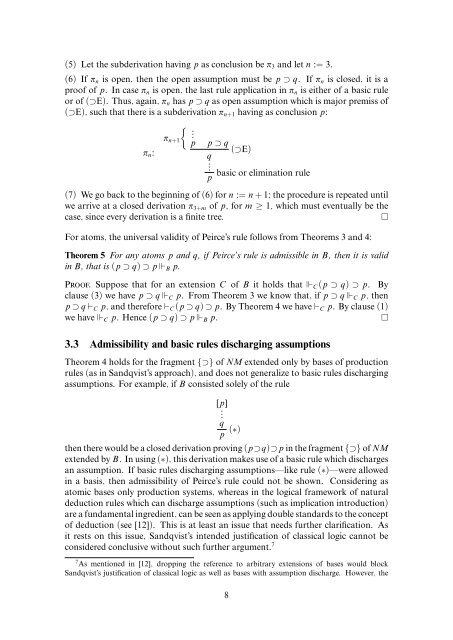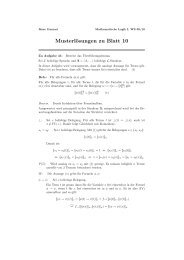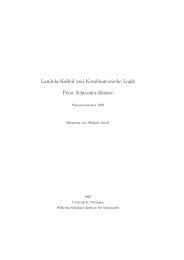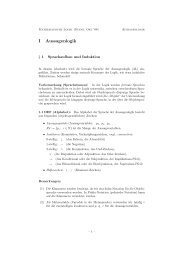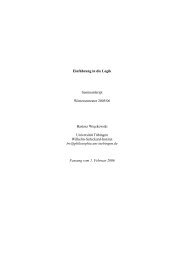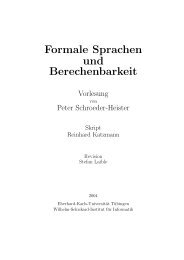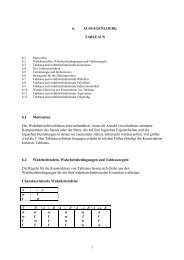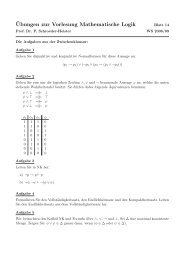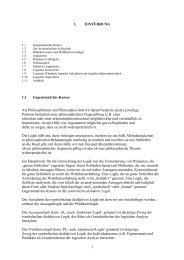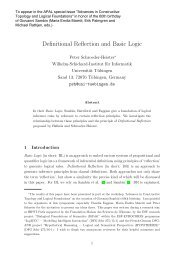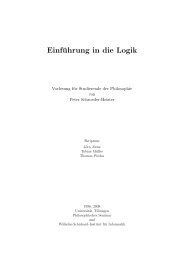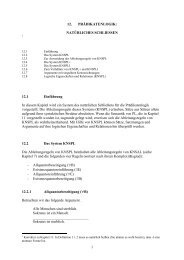Constructive semantics and the validity of Peirce's law
Constructive semantics and the validity of Peirce's law
Constructive semantics and the validity of Peirce's law
Create successful ePaper yourself
Turn your PDF publications into a flip-book with our unique Google optimized e-Paper software.
(5) Let <strong>the</strong> subderivation having p as conclusion be �3 <strong>and</strong> let n := 3.<br />
(6) If �n is open, <strong>the</strong>n <strong>the</strong> open assumption must be p ⊃ q. If �n is closed, it is a<br />
pro<strong>of</strong> <strong>of</strong> p. In case �n is open, <strong>the</strong> last rule application in �n is ei<strong>the</strong>r <strong>of</strong> a basic rule<br />
or <strong>of</strong> (⊃E). Thus, again, �n has p ⊃ q as open assumption which is major premiss <strong>of</strong><br />
(⊃E), such that <strong>the</strong>re is a subderivation �n+1 having as conclusion p:<br />
�n:<br />
�n+1<br />
�<br />
.<br />
p p ⊃ q<br />
(⊃E)<br />
q.<br />
basic or elimination rule<br />
p<br />
(7) We go back to <strong>the</strong> beginning <strong>of</strong> (6) for n := n + 1; <strong>the</strong> procedure is repeated until<br />
we arrive at a closed derivation �3+m <strong>of</strong> p, for m ≥ 1, which must eventually be <strong>the</strong><br />
case, since every derivation is a finite tree. �<br />
For atoms, <strong>the</strong> universal <strong>validity</strong> <strong>of</strong> Peirce’s rule follows from Theorems 3 <strong>and</strong> 4:<br />
Theorem 5 For any atoms p <strong>and</strong> q, if Peirce’s rule is admissible in B, <strong>the</strong>n it is valid<br />
in B, that is (p ⊃ q) ⊃ p �B p.<br />
Pro<strong>of</strong>. Suppose that for an extension C <strong>of</strong> B it holds that �C (p ⊃ q) ⊃ p. By<br />
clause (3) we have p ⊃ q �C p. From Theorem 3 we know that, if p ⊃ q �C p, <strong>the</strong>n<br />
p ⊃ q ⊢C p, <strong>and</strong> <strong>the</strong>refore ⊢C (p ⊃ q) ⊃ p. By Theorem 4 we have ⊢C p. By clause (1)<br />
we have �C p. Hence (p ⊃ q) ⊃ p �B p. �<br />
3.3 Admissibility <strong>and</strong> basic rules discharging assumptions<br />
Theorem 4 holds for <strong>the</strong> fragment {⊃} <strong>of</strong> NM extended only by bases <strong>of</strong> production<br />
rules (as in S<strong>and</strong>qvist’s approach), <strong>and</strong> does not generalize to basic rules discharging<br />
assumptions. For example, if B consisted solely <strong>of</strong> <strong>the</strong> rule<br />
[p]<br />
.<br />
q (∗)<br />
p<br />
<strong>the</strong>n <strong>the</strong>re would be a closed derivation proving (p⊃q)⊃p in <strong>the</strong> fragment {⊃} <strong>of</strong> NM<br />
extended by B. In using (∗), this derivation makes use <strong>of</strong> a basic rule which discharges<br />
an assumption. If basic rules discharging assumptions—like rule (∗)—were allowed<br />
in a basis, <strong>the</strong>n admissibility <strong>of</strong> Peirce’s rule could not be shown. Considering as<br />
atomic bases only production systems, whereas in <strong>the</strong> logical framework <strong>of</strong> natural<br />
deduction rules which can discharge assumptions (such as implication introduction)<br />
are a fundamental ingredient, can be seen as applying double st<strong>and</strong>ards to <strong>the</strong> concept<br />
<strong>of</strong> deduction (see [12]). This is at least an issue that needs fur<strong>the</strong>r clarification. As<br />
it rests on this issue, S<strong>and</strong>qvist’s intended justification <strong>of</strong> classical logic cannot be<br />
considered conclusive without such fur<strong>the</strong>r argument. 7<br />
7 As mentioned in [12], dropping <strong>the</strong> reference to arbitrary extensions <strong>of</strong> bases would block<br />
S<strong>and</strong>qvist’s justification <strong>of</strong> classical logic as well as bases with assumption discharge. However, <strong>the</strong><br />
8


